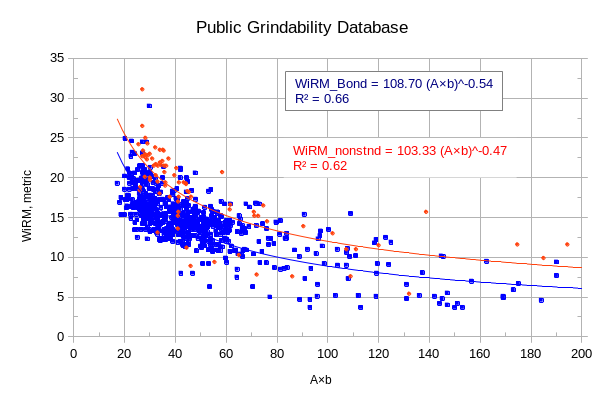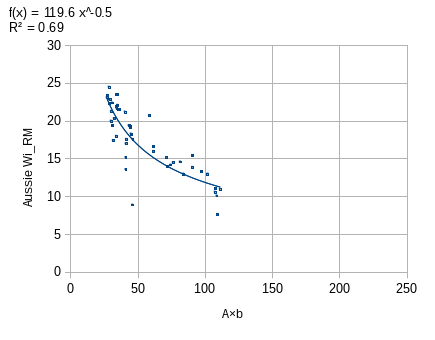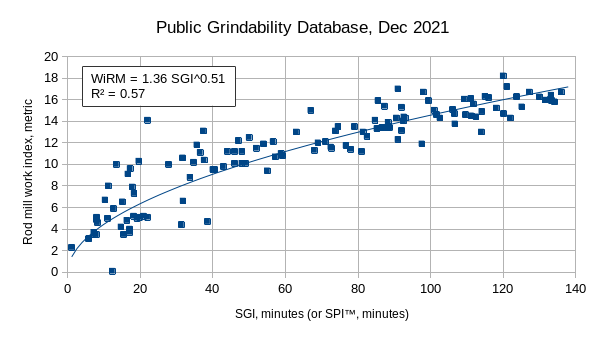[category:testwork]
Converting between comminution test types
Different tests are used in different grindability models for substantially the same purposes. Certain grindability tests are compatible with other tests, and an approximate conversion can be established by comparing to a database of testwork.
The determination of which tests are compatible with other tests is largely a function of the particle size of the specimens subjected to testing.Doll & Barratt, 2011 Ore properties also play a role because some tests are sensitive to changes in ore density and other tests operate with a biased sample consisting only of competent pieces.
Medium size class
The three tests in the medium size class are:
- Bond rod mill work index (WiRM)
- SAG Grindability index (SGI) or SAG Power index (SPI™)
- Drop weight test, both JK and SMC (A×b, DWI, Mia, etc)
Bond rod mill work index versus A×b
Only considering rod mill work index tests performed in laboratory mills equipped with wave liners. This is the standard specified by F. Bond and is typical of laboratories in North and South America.
Only considers A×b values less than 250 as values greater than that are meaningless.
|

|
Non-bond rod mill work index versus A×b
Only considering rod mill work index tests performed in laboratory mills equipped with smooth liners. This is not consistent with the specification of F. Bond and is typical of laboratories in Australia.
|

|
Bond rod mill work index versus SGI & SPI
Only considering rod mill work index tests performed in laboratory mills equipped with wave liners. SGI does not contain a density correction, and this relationship is probably only valid for ore density in thr range of 2.50 to 2.80 t/m3
Only considers SGI values less than 250 as values greater than that are meaningless.
|

|


